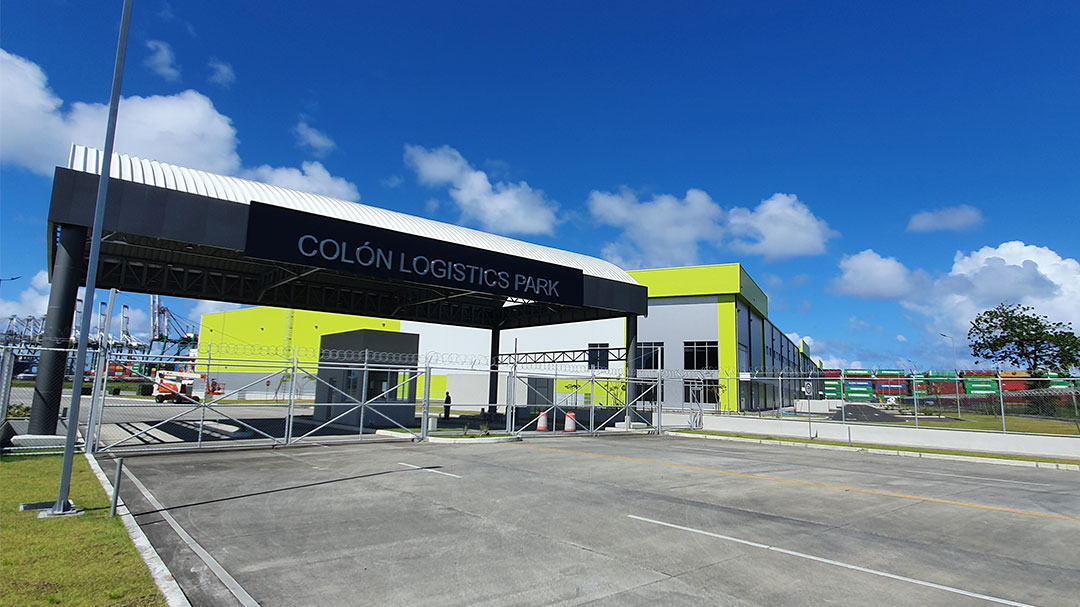Panamanian ports are geared for another record year in 2021 as its forecast clearly surpass the 7.7m teu registered he year before. Looking at recent port activity, Panama’s cargo volumes have passed the 7m teu milestone in 2018 and kept growing constantly. Panama total capacity is at 14m teu.
The Panamanian terminals have transcended the COVID-19 pandemic without shutting down one single day and with taking all the sanitary measures ordered by the health authorities.
Port workforce have also benefitted from early vaccination reaching a coverage of average vaccination of 70% to 90% depending on the location. According to the Panama Maritime Authority (AMP) statistics, during 2020, port activity increased by 5.3% to 7,734,024teu, up from 7,346,859teu the year before.
All terminals registered positive results but Evergreen’s Colon Container Terminal (CCT) whose throughput fell by 8.9% to 714,441teu. Manzanillo International Terminal-Panama (MIT) posted the highest movements with 2,663,437teu, up 4.7%; Hutchison’s Panama Ports Co (PPC) Balboa grew by 1.7% to 1,956,743teu and Cristobal volumes, PPC’s another terminal, also increased by 2.45% to 1,077,024teu. PSA International-Panama jumped the board registering growth of 23.6% to 1,204,915teu.
Bocas Fruits, a terminal specialised in handling banana exports, posted 117,464teu, up 71.4% compared to 2019.
And during the first nine months of 2021, container cargo volumes grew by 12.4% to 6,390,829teu, up from 5.68m teu in 2020, according to AMP statistics. Almost all terminals, apart from Cristobal on the Atlantic side and PSA-Panama, on the Pacific, posted positive results.
On the Atlantic side, Evergreen’s Colon Container Terminal (CCT) box volumes increased by 36% to 709,590teu. ‘Between 2002 and 2007 the terminal had experienced similar annual growth rates…and at the current rate of throughput we could end up around 1m teu,’ says CCT president Stephen Shaffer. Manzanillo International Terminal-Panama (MIT) passed the 2m mark with 2.105,087teu, up 8.4% compared to the same period in 2020. ‘We expect 2021 to continue with a positive trend, where we will grow from +3% to +7% when compared to 2020 volumes,’ explains MIT’s general manager Stacy Hatfield. At Cristobal, administered by Hutchison’s Panama Ports Co. (PPC), volumes decreased by 0.8% to 790,810teu.
On the Panama Canal ‘s Pacific entrance, PPC’s Balboa also showed good results, growing by 24.8% to 1.777,067teu, up from 1.42m teu the year before. ‘We expect to close 2021, 8% above 2020, and for the coming year, we expect to have similar volumes as those of 2021,’ says PPC gm Jared Zebede.
PSA-Panama registered a small decrease of 1.4% to 903,223teu. But ‘for what goes of 2021 (September YTD) we are slightly above 975,000teu which is in par with 2020. Something to be appreciated though is that in 2020 we grew a lot versus 2019 hence keeping that pace was certainly a difficult prediction to be made. FY2021 is expected to be in the neighbourhoods of 1.2m teu which again is on par with 2020,’ says Alessandro Cassinelli, PSA-Panama general manager.
Bocas Fruits also followed the trend, growing by 21.9% to 105,052teu. Congestion in the US and Chinese ports has been noted even in far-flung locations such as Panama. ‘It has affected us in the sense that services originating in Asia are often delayed and unable to arrive in their scheduled windows. But that is now happening with services on their return legs from North America and Europe as well. The result is that everyone must communicate clearly with all parties to ensure we know in advance when windows can or cannot be maintained. If services cannot maintain the original schedule and we have enough advance notice, we can plan accordingly and find ways to accommodate everyone. Thus far that approach has worked reasonably well, and I think customers have been fairly understanding since everyone is facing similar pressures,’ explains CCT’s Stephen Shaffer.
‘Congestion elsewhere in the networks of customers is also having an impact on how long containers dwell here. If space is not available in the destination port or some other intermediate port, we may see boxes (laden and empty) get rolled until the lines are sure space exists at the destination. Naturally that affects our dynamic capacity which can impact other aspects of the operation,’ he adds.
The prospect of an appreciable Christmas season that would augment volumes for a record year might be impaired by the current congestion that some port operators believe will continue for the entire 2022.
‘Possibly falling into 2023 as well.
This Christmas, coupled with Chinese Lunar Year which will be the first weeks of February, will be a challenging period. People like me that buy Christmas gifts at the very last moment may have bad surprises this year on the shelfs,’ comments PSA-Panama’s Alessandro Cassinelli.
‘After Chinese New Year we should expect another wave of replenishing the stocks. The supply chain shift from ‘Just In Time’ to ‘Just in Case’ will produce its major effects in those periods. How long it will last is difficult to say. I believe that we will need to reset the bar higher and apply some lessons learnt from this period. I am seeing shipping to face a new normal and not coming back to pre-COVID trends,’ he remarks.
MIT’s Stacy Hatfield is sceptic whether congestion will affect Panama’s volumes. ‘Container surge in volume and consequential congestions post-pandemic as economies rebounded, Panama has been no exemption to the aftershocks generated. Panama is one of the main transhipment hubs of Latin America and therefore a key connectivity point for different routes, cargoes, and commercial patterns,’ he says.
‘The effect has been somewhat linked to high peaks of containers and extended long dwell times they experienced due to over-bookings or lack of schedule integrity by the Lines. Going into the end of year season typically starts building up inventories as early as late August in a typical year cycle. For the rest of the year, it remains to be seen if we continue the same growth experienced in 2021 which will heavily depend on the macroeconomics of the region we serve’.
‘Considering the transit time from Asia to The Americas can take around 35 days if you manage to get space onboard, as vessels are running at maximum capacity, ocean freight are skyrocketing, therefore for shipping carriers it continues to be a good year, for the terminals not that good as we continue to have congestions and delays at the same rates,’ comments PPC gm Jared Zebede.
This May, CCT opened its 11.3h-Colon Logistics Park, S.A. (CLP) located on CCT’s concession land, with additional 19.4 hectares available for further development. ‘The government issued new customs guidelines for facilities such as our own,’ CCT’s president Stephen Shaffer says. It is the first facility of its kind with in-customs office, in Panama.
‘We can scale to fit the needs of any client from 6,000sq mtr to a complete warehouse.’ In the first phase, there are three warehouses of approximately 18,000sq mtr each. The first 18,000sq mtr warehouse has been completed. It is a Class A facility built to international specifications.
‘The first warehouse provides a user with ample flexibility in terms of footprint as well as cube. Some companies that might need to use 10,000sq mtr in another location might only need 6,000-8,000sq mtr in our space due to higher internal heights giving them at least 20% more cubic area in which to store goods on a smaller footprint, depending to the products and how
a tenant needs to use the space.’ ‘The idea is to serve as a regional hub receiving standard inbound packs that can be customised to meet clients’ needs for Central, South American and Caribbean markets by way of value-add operations,’ adds Shaffer.
At the end of 2019, the Panama Canal, and the Panama Maritime Authority (AMP) upgraded their Panama Maritime Single Window System (VUMPA, for its acronym in Spanish) launched in 2017. This joint effort further optimised national maritime procedures required for international vessels.
VUMPA is an online platform that automates information-sharing between Panamanian agencies involved in processing the reception and departure of ships, streamlining international maritime transportation at Panamanian ports. VUMPA has helped reduce costs, optimise itineraries, and improve transparency and productivity, while providing substantial time savings to maritime customers taking advantage of Panama’s logistics offerings.
‘VUMPA has been instrumental in reducing vessel clearance procedures that before took from 30-45 minutes to 10-20 minutes as a maximum. The compounded effect of the ‘dead time’ now transformed into ‘operational time’ has assisted to move more cargo at the same time helping reducing build-ups and expediting vessel departures. This was already true pre-pandemic while now, more than ever, VUMPA proves highly efficient and COVID-preventive especially when compared to other ports where virtual clearances have not been implemented,’ comments Hatfield.
INFO: www.seatrade-maritime.com

